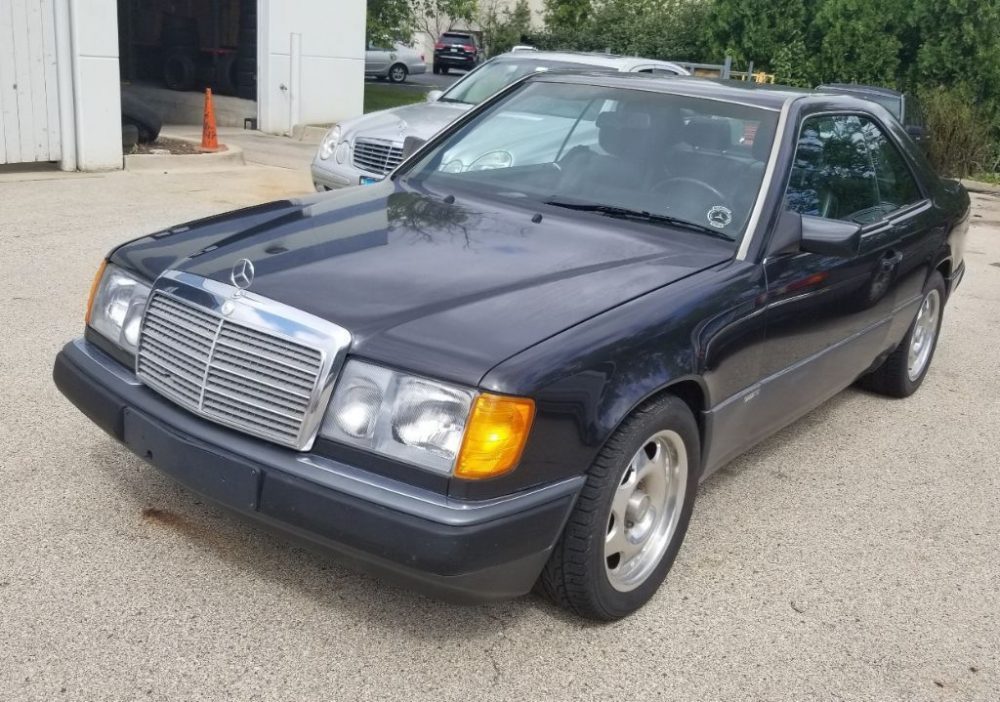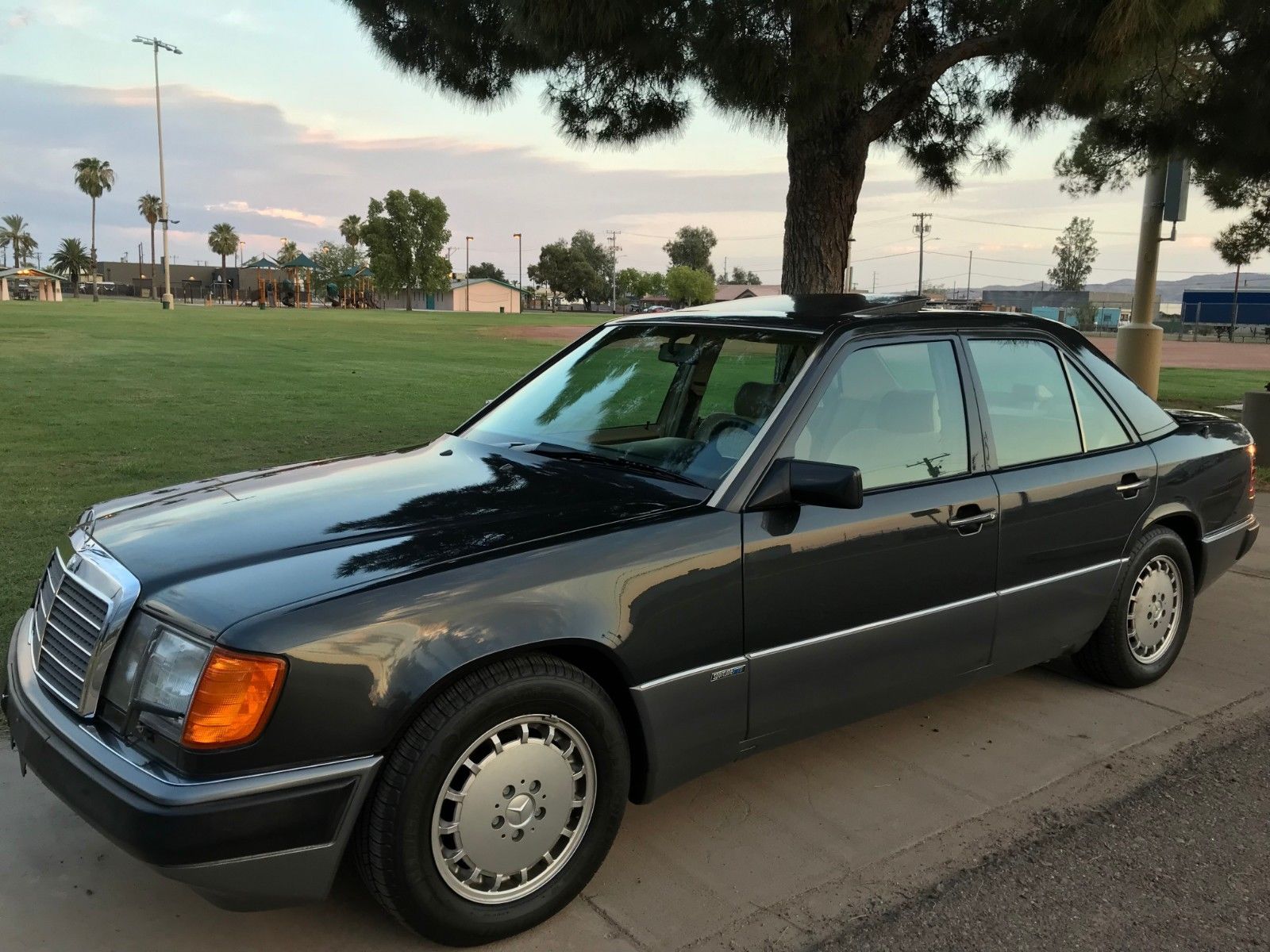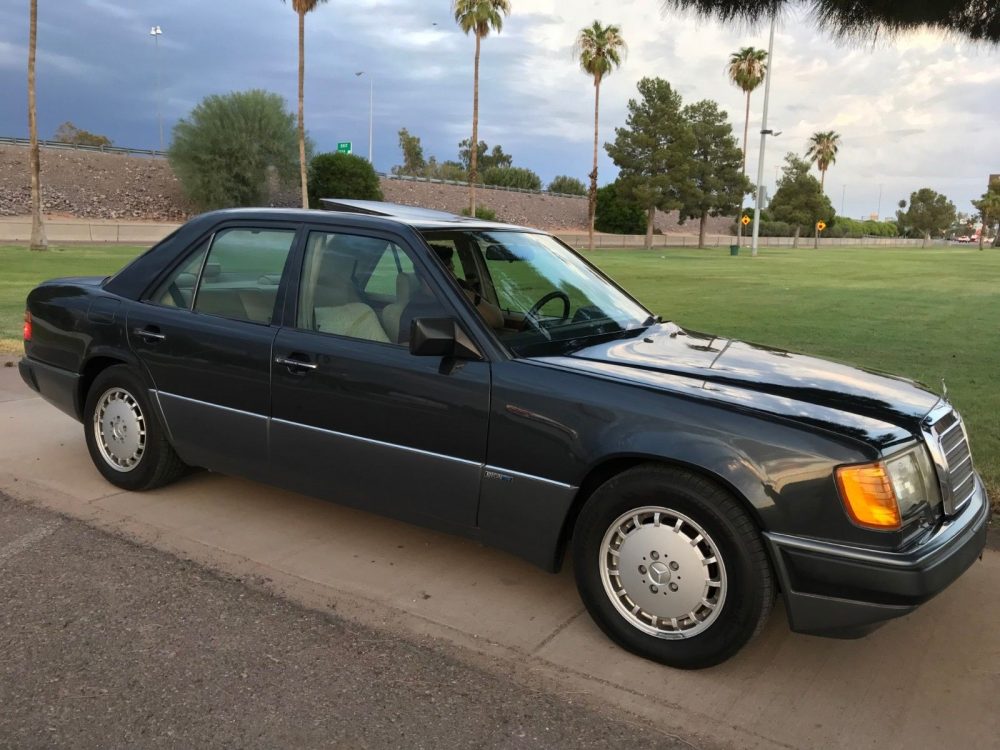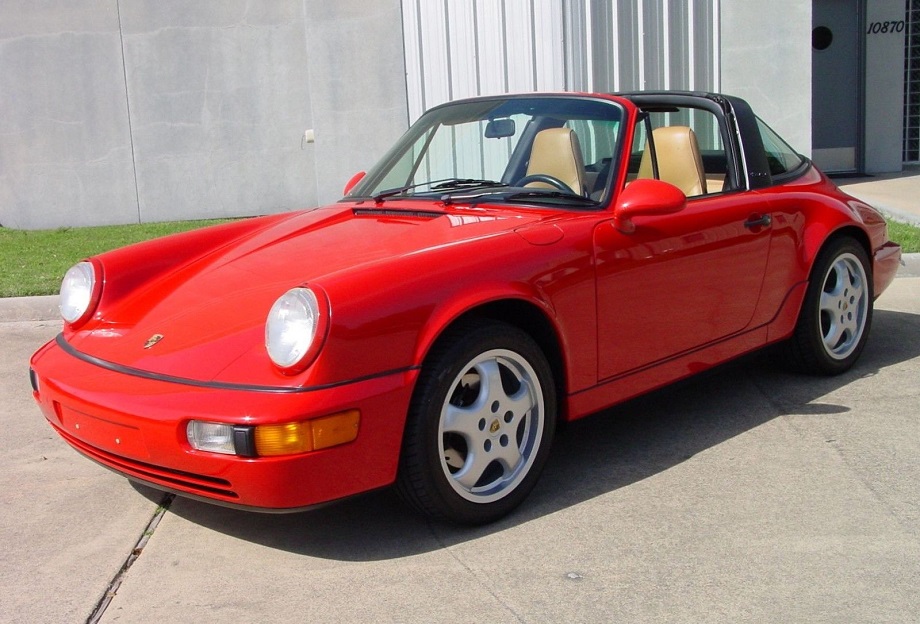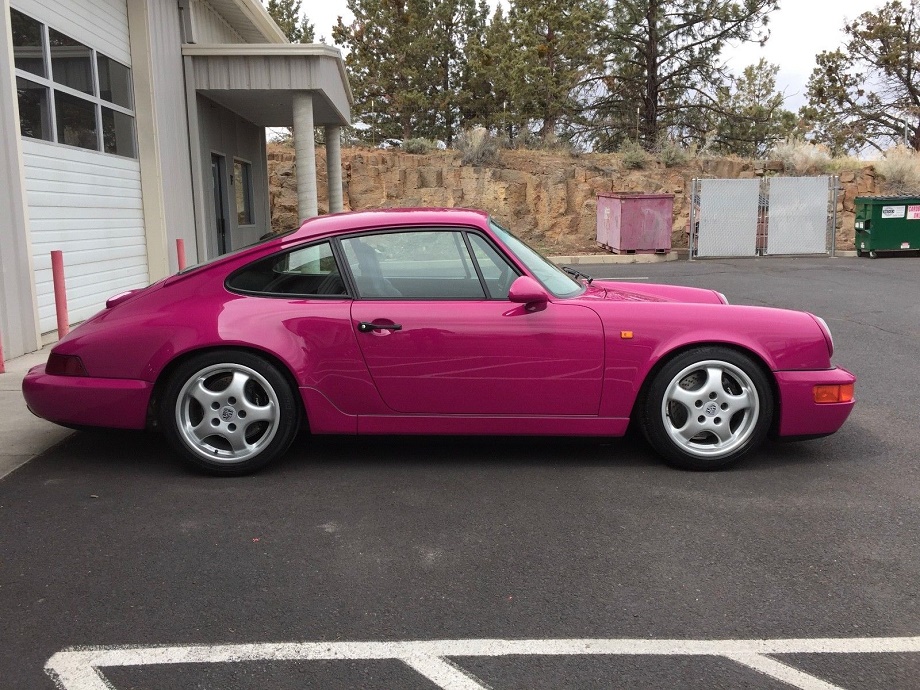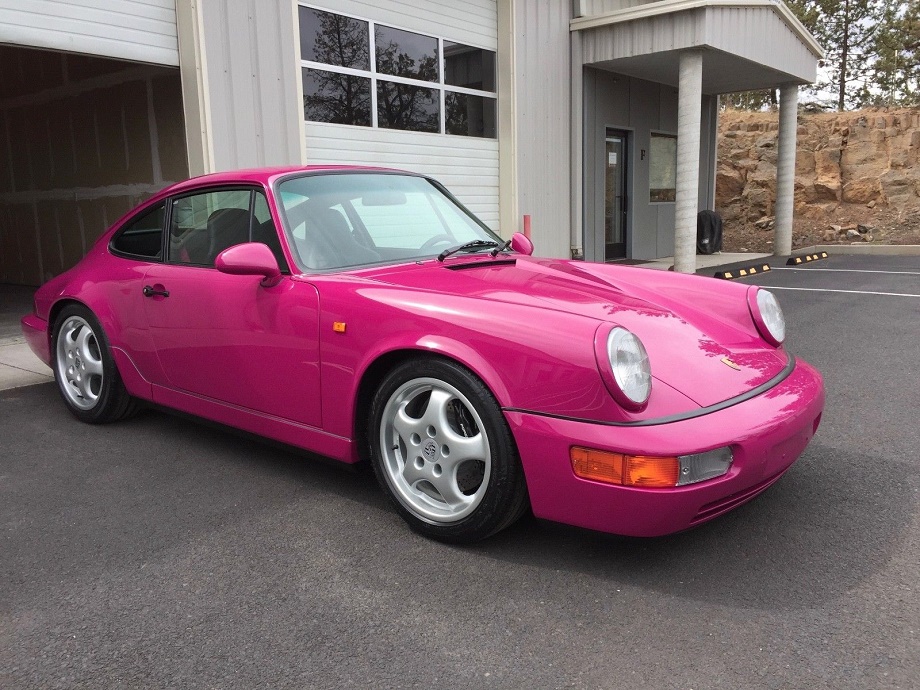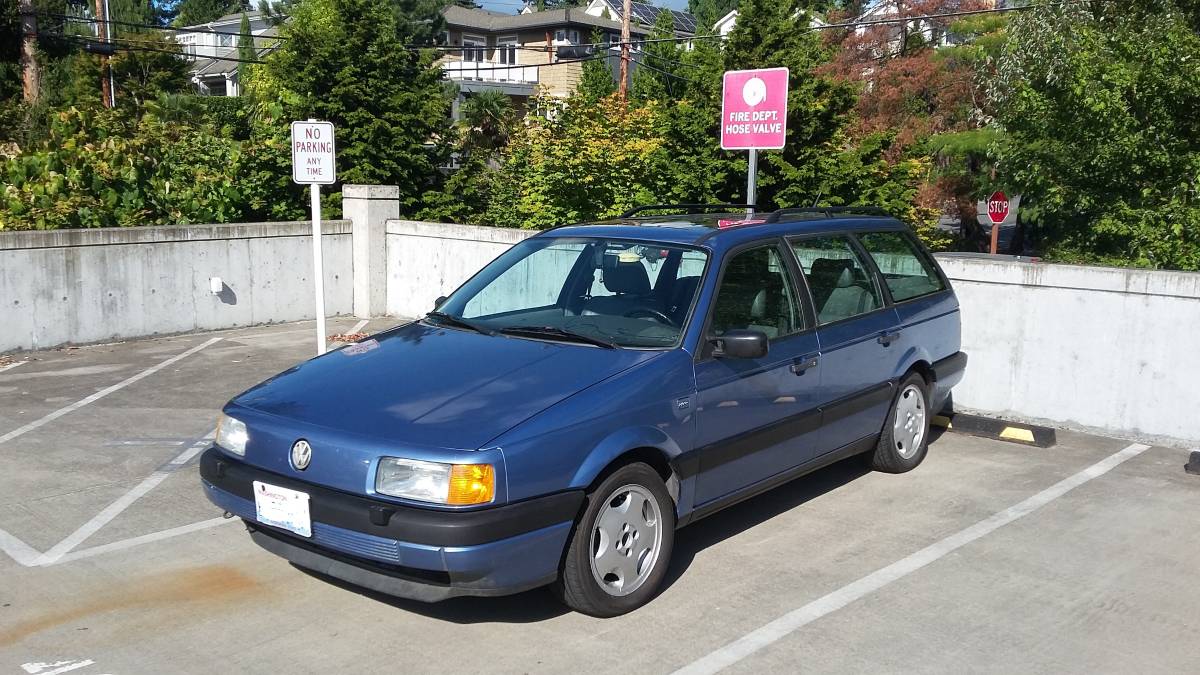Yesterday I looked at 1992 Mercedes-Benz 300E for the pure fact that is it the Sportline option that is pretty rare. Though Mercedes made about four billion W124 300Es, it feels like almost none of them are Sportline. Well, when it rains it pours, because I happen to come across the even rarer 1992 230CE Sportline. Before everyone rushes down to the comments and starts typing ”If only it had a manual transmission!”, hold your fingers, because it does. We North Americans were not graced with this model and surely never in the 5-speed even if it had come, so this one is a rare bird to say the least. Somehow, this 230CE Sportline is up for bid outside of Chicago. I just wish it was a better example.
Tag: 1992
Last week I went back-to-back with Mercedes-Benz V8 W124s with a high-mileage 500E and a 400E that ended up selling to one of our readers. I thought the 400E was a hell of a buy for the price it went for and probably one of the better deals I’ve seen in a while. Today, I figured I would round out the W124 sedan lineup with a 1992 300E. As you might have noticed by the title, this isn’t a standard 300E but rather the 300E Sportline. I’ve gone over what makes the Sportline special about a year ago, but the short of it is a bunch of suspension and steering changes along with a few interior bits to make this car feel, well, sporty. Sadly, no engine changes from the standard 3.0 liter M103, but you take what you can get when it comes to special editions and Mercedes-Benz. This example up for bid in Phoenix isn’t the most pristine Sportline I’ve come across, but it is rare enough to re-visit. As for the price, I think this one can be had for very little money.
CLICK FOR DETAILS: 1992 Mercedes-Benz 300E Sportline on eBay
4 CommentsYesterday I wrote up a 911SC priced at top market (perhaps even above top market) and I will stick with that general theme here simply as an exploration of where some of these high priced cars are selling. That 911SC probably shouldn’t have been priced as high as it was given its overall condition and mileage. It’s a nice car, just not top market.
However, this Guards Red 1992 Porsche 911 Carrera Targa is befitting of that sort of price. The question simply is just how high the market has reached because the asking price here is quite a bit above the standard 964 pricing we typically see. That’s not unheard of for the 964 Targa because they’re pretty rare and from my experience the vast majority really don’t seem to be in great shape and have much higher miles. If we remove those issues do we have a six-figure car? Here is where we might find out.
CLICK FOR DETAILS: 1992 Porsche 911 Carrera 2 Targa on eBay
Comments closedRubystone Red (Sternrubin) might be the most love/hate of the well known Porsche colors. I imagine there are colors within Porsche’s extensive catalog that have been less liked overall, but those colors disappear rarely to be asked for again. Rubystone, while we don’t see it very often, does still come around as a PTS option on modern 911s, especially on the limited production high performance models like the GT3 RS and 911 R. And when it does it looks just as stunning as it did upon its debut. A lot of buyers might not like it, but whatever its qualities, on cars that deserve a bold attention-grabbing color it’s a color that performs exactly that function.
Of course, it was on just such a model that it debuted: the 964 Carrera RS. We did not get the Carrera RS in the US market, but rather had to settle for the more tame RS America. With the passing of time it is now legal to import the true Carrera RS and we’ve seen quite a few over the past year or so. Here we have another one, fully restored and looking nearly immaculate, in that eye-popping color of Rubystone Red.
CLICK FOR DETAILS: 1992 Porsche 911 Carrera RS on eBay
6 CommentsAs we saw in last week’s Quantum (née Passat), underneath the Volkswagen was almost all B2 Audi. They had borrowed Audi’s full quattro setup in the Syncro model until 1988. That was the same year that the G60 supercharged engine had debuted in the Golf in Europe, but it wouldn’t be until late 1989 and the new Corrado model’s introduction that the G-Lader would become better known on these shores.
The PG G-Lader devoted to the Rallye, G60 and third generation Passat Syncro wasn’t the most powerful unit VW of the time period at 158 horsepower and 166 lb.ft of torque (the 3G 16V version in the Golf Limited had 50 horsepower more), but the combination of these items seemed awesome at the time to U.S. fans because, of course, in the midst of VAG’s early 90s sales slump they opted not to bring the package here. Like the Corrado, based on Mk.2 underpinnings the Passat’s engine configuration had moved from longitudinal in the B2 to transverse in the third gen, meaning that Audi’s quattro system remained unique to that brand. The Golf’s transverse engine placement precluded use of the Audi longitudinal design, which used output shafts and mechanical differentials. Instead, Volkswagen turned to Austrian company Steyr-Daimler-Puch for development.
Noted for development of four-wheel-drive systems and probably most recognizable for the Pinzgauer military vehicle, Steyr’s solution to the transverse problem was to utilize a viscous coupling similar to the AMC Eagle. However, while the Eagle’s system was all-wheel drive, all the time, Volkswagen’s system would only engage when the front wheels slipped. The Passat added new electronic features to the range topper, too – including anti-lock brakes and an electronic differential lock, and the new shape dropped the drag coefficient to .31.
The best part about the G60 Passat, though? You could get one in wagon form:

